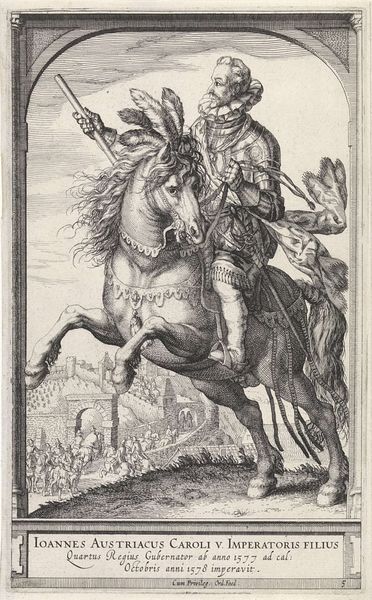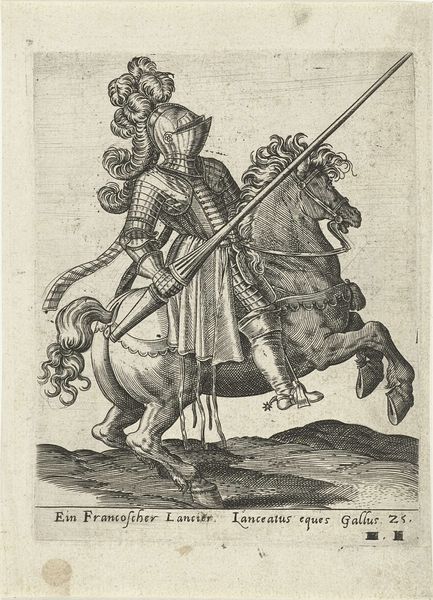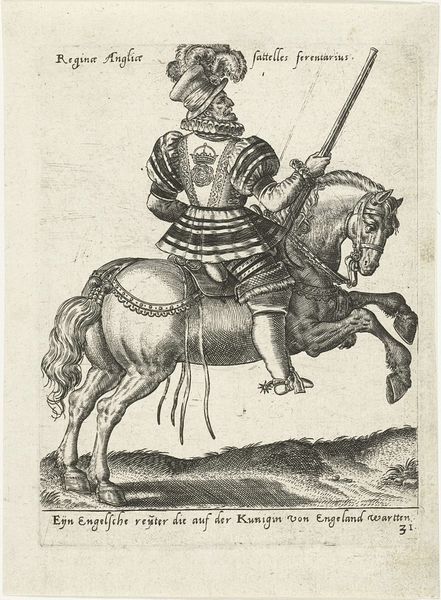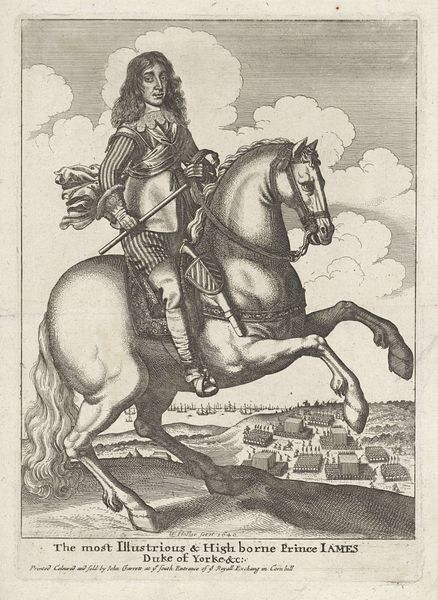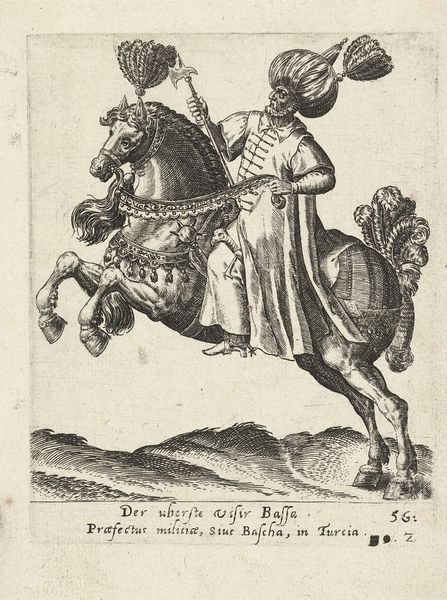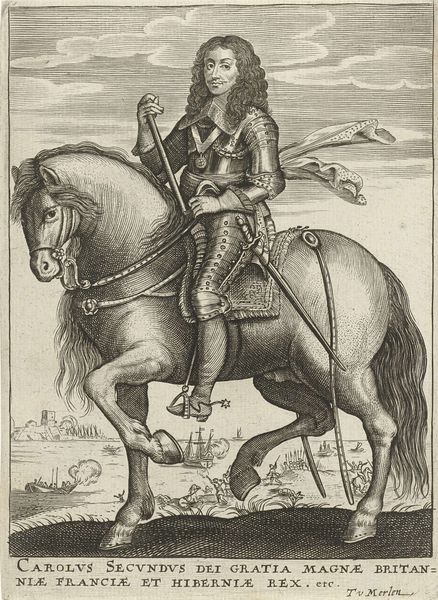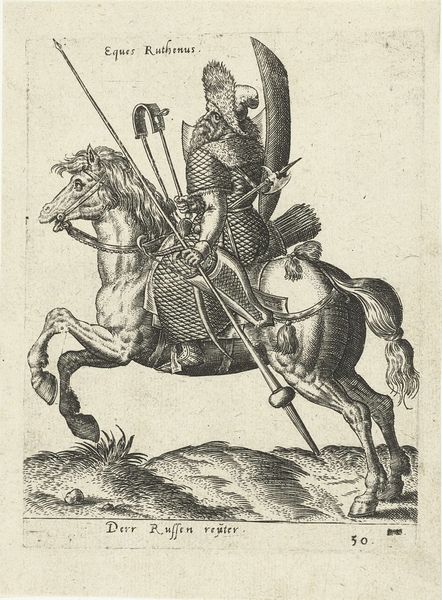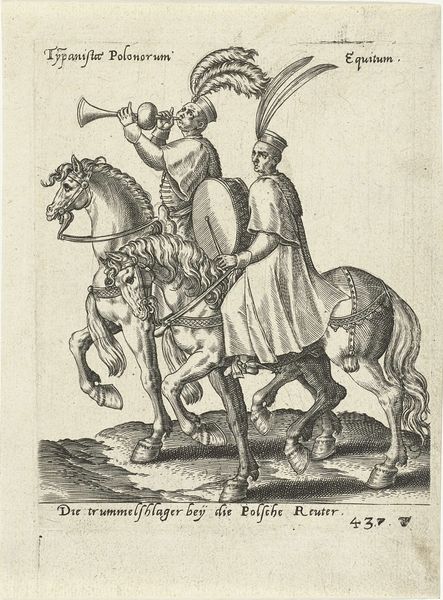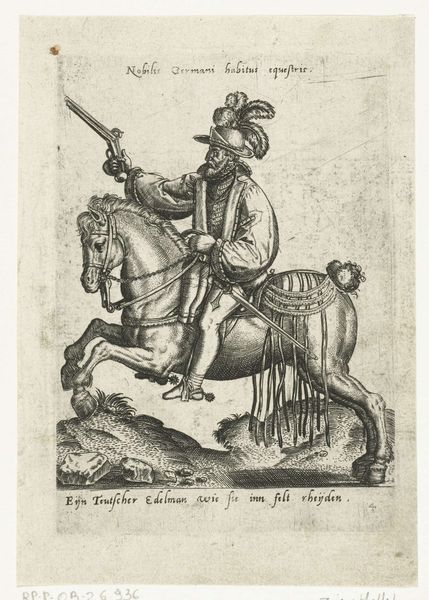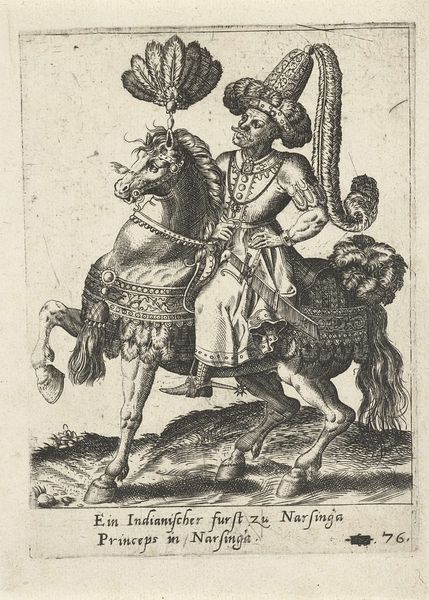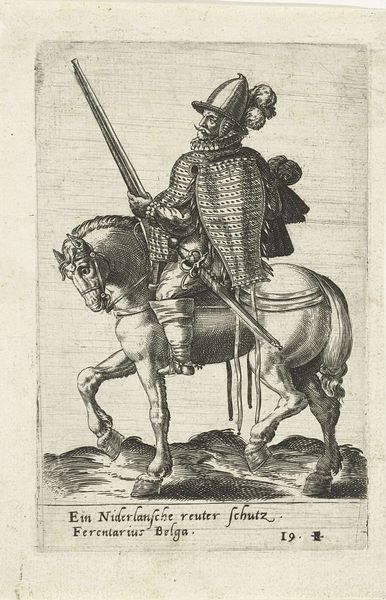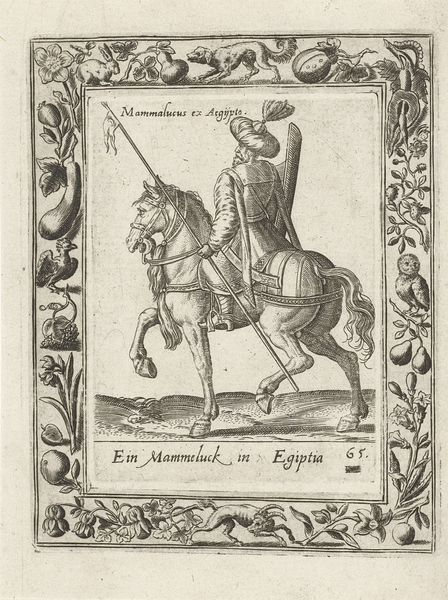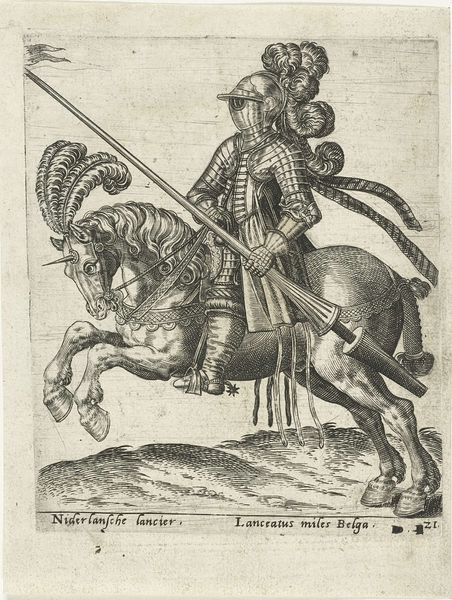
print, engraving
# print
#
pencil sketch
#
landscape
#
figuration
#
pen-ink sketch
#
line
#
genre-painting
#
history-painting
#
engraving
Dimensions: height 140 mm, width 96 mm
Copyright: Rijks Museum: Open Domain
Abraham de Bruyn created this engraving, Tartaarse ruiter, in the 16th century. Notice how the composition is dominated by the figure of a rider on horseback, poised mid-gallop. The fine lines delineate the musculature of the horse and the rider's attire, creating a textured contrast between the smooth skin and detailed fabrics. De Bruyn masterfully uses line and form to create a sense of dynamic movement, capturing the essence of the rider’s assertive posture. We can analyze this artwork through the lens of structuralism. The rider, horse, and landscape are not merely representational but function as signs within a semiotic system. The rider's weapons and clothing, along with the horse's posture, evoke a sense of martial prowess and cultural identity. The engraving destabilizes fixed meanings of cultural representation by presenting an image of the "Tartar" that blends exoticism with European artistic conventions. This reflects a broader artistic and philosophical engagement with the exploration of identity and cultural difference in the early modern period.
Comments
No comments
Be the first to comment and join the conversation on the ultimate creative platform.
